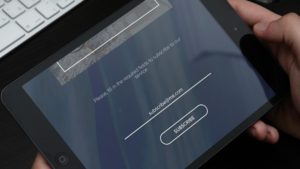By Nicolas Rajabaly, co-founder and CCO of makemepulse.
Pre-Covid, research told us that the baby-boomer generation owned technology, but generally didn’t use it with frustration at not understanding being highlighted as the no.1 barrier to entry. Global lockdowns and the arrival of a much more insular life has meant the internet became our most reliable means of communicating regardless of age.
I’ve seen this first hand in a very real way with my parents suddenly/finally willing to embrace learning how to video call, shopping online and take advantage of streaming services like Netflix, Spotify and new subscriptions, and they are not unusual. Lloyds Bank recently published a survey saying that they had 3 times more online banking customers who were 70+ than before COVID.
In an industry typically obsessed with creating experiences, products and services for the young, COVID19 has made me want to think about how technology can empower the older generations. We know it isn’t purely about utility either. In gaming, one of the largest recognised gaming profiles are ‘time fillers’, people who game when they have a moment to fill and happen to typically be 51-65 with a heavy female skew.
With the right mechanics, could gaming offer a sense of community at a time when it is much harder to experience safely in real life? Animal Crossing has seen huge success because it offers community and escapism to the Gen Z and Millennial audiences, what could be the equivalent for the 50+?
We’ve seen initiatives from financial services like the Barclays ‘Digital Eagles’ before COVID, however, I want to challenge the creative, design and development community, ourselves included, to think more about what we can do. How can we challenge the brands and partners we work with to think about this too? Can we learn from UI & UX from popular ‘time filler’ games and translate this into experiences that will help this generation continue to maintain this behaviour?
The over 45s typically make up over half of the population in European countries. COVID has made many of us re-evaluate our priorities and we are already beginning to reflect this in our purchase power, but how can brands talk to this audience in particular about their products and services and use digital, perhaps for the first time to access this audience?
Brands invest so much in entertaining the younger generations, but technology has become a lifeline for the older generation. The Orange Christmas campaign in France this year is focused on a grandfather watching his grandchildren use a unicorn social AR lens, he doesn’t realise that technology can allow him to do the same, so he builds a whole unicorn in his garage from scratch. Microsoft XBox have also released a mini docuseries charting the relationship between teenager grandson and grandfather as the teenager teaches the grandfather to game.
They chat and share details of their lives in lockdown whilst paying together. They are charming and sentimental, but it also makes me ask, why are the tech companies not doing more to educate older generations about how to use their platforms? My mum keeps sending me videos via SMS she could have shared immediately and privately via Instagram! We’ve seen Netflix begin to address this with their commissioning and existing title licensing, but we need more, especially from the tech companies that pride themselves on being community builders.
What can we do right now? Beyond what the tech platforms should offer, I’d love to see us learn from existing products and services that have helped connect people through technology. Peanut has been a great app for example that has created a virtual community of new mums and tackled many of the peripheral topics and challenges around motherhood.
Could we see something similar for the older generations who need local companionship, help and support from their communities? Can augmented reality help with demonstration and in-home set ups? Brands like IKEA lead the way here, how can this be applied specifically to benefit the older generations? What happens also when this is combined with voice technology removing the need for dexterous fingers on tiny screens? The revival of the QR code is also really interesting in offering a very simple entry point, and as a result of tracking apps everyone is now familiar with how this technology works.
Digital can’t replace real life but it can enhance it. How we innovate, design and develop for the older generations now could change how we design for the future. Just because millennials and younger generations have grown up with technology, it doesn’t stop the natural decline in learning. Which for many, especially those who don’t work within tech, quietly begins as early as our early 30’s.
Technology and design can be transformative as we live longer. I really hope that we as a community can take this unexpected change in behaviour to focus on designing utilities and experiences that benefit and improve the quality of life for the older generations and offer a sense of connectedness for years to come.









